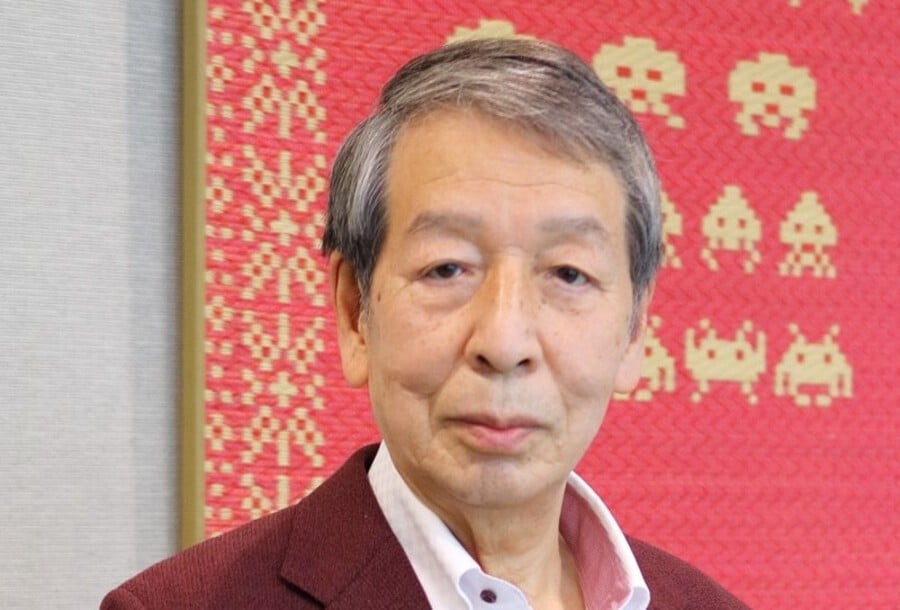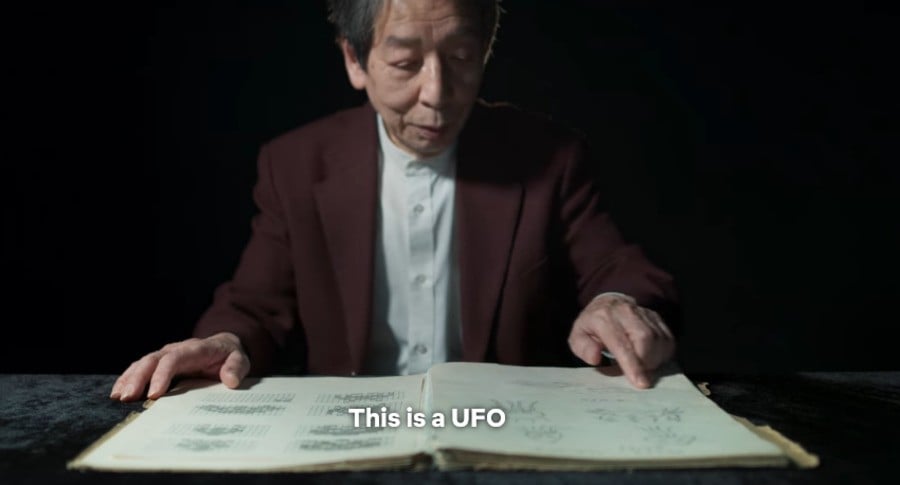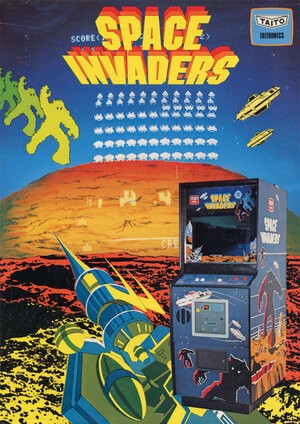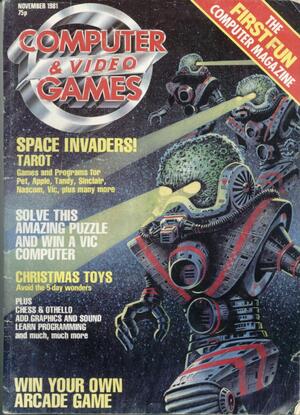
On Sunday, 31 March 2024, the legendary Tomohiro Nishikado celebrates his 80th birthday, and to honour this occasion, the Japanese Game Preservation Society is inducting him as an honorary member.
Every single person reading this page has been touched by the legacy of Nishikado-sensei. While his portfolio is diverse and prominent, which we'll cover in moment, he is obviously best known for creating Space Invaders (1978) - designing, drawing, programming, genuinely hand-crafting the game. Even if you've never played Space Invaders, you know someone who has. Or you've witnessed media directly influenced by it. It cannot be overstated how far-reaching Nishikado's influence on humanity has been. He stands alongside Shakespeare, Picasso, Walt Disney, The Beatles, Stan Lee, and numerous other sacred luminaries whose contributions to global culture will stand for centuries.
This is not hyperbole. Let us take a moment to reflect on how far-reaching this one man's vision was.
There's a series of photos of famed film director Steven Spielberg posing with his own private Space Invaders cabinet (there are several varying shots). The claimed dates vary, the photographer is never credited, but it's regularly reposted online. Here we have the world's most renowned filmmaker posing with Space Invaders to define how cool he is. Cool leather jacket, nice stone surroundings, with a casual stance and happy grin exuding creative self-confidence. A man who can partake of any earthly pleasure, and he chooses this arcade classic. Spielberg is telling the world that Tomohiro Nishikado embodies and defines excellence.

There's a cute story about Space Invaders causing a shortage of coins in Japan, but when you examine the facts this scenario gets debunked fast - official records show a decrease in coin production and arcade operators wanted to cash that money at the banks, thus keeping them in circulation. So let's look things we can verify. When Computer & Video Games launched, often touted as the first games magazine, it did so with Space Invaders on the cover. When Atari ran the eponymous Space Invaders Tournament in 1980, it was the conversion of Nishikado's original which featured. Think about all the films that came after, how many times did someone reference "those Invader games" as a way of sounding hip or modern? How many times have you seen items of clothing or even street graffiti where those iconic little aliens were instantly recognisable? Not to mention how seemingly every veteran game developer from Eugene Jarvis to Shigeru Miyamoto has referenced it in interviews. We've also covered the game previously ourselves.
Is it any wonder then that now, to celebrate his 80th birthday, the Japanese Game Preservation Society is making Nishikado an honorary member?
We asked GPS founder Joseph Redon for a statement:
The Game Preservation Society not only collects game software, hardware, magazines and books, but also keeps a circle with the leading creators of the time who made these things. Without people, culture cannot be born. Behind every masterpiece there is always a human story. Our 'Honorary Member' system was born out of the belief that recording people's testimonies is an important part of game preservation. So we are pleased to announce that Tomohiro Nishikado, who has been involved in the development of games since the dawn of the industry in the 1970s, and is still an advisor to Taito, will be an honorary member."
Previous honorary members include:
- Toru HIDAKA (Enix; programming teacher)
- Yoshio KIYA (Legacy of the Wizard)
- Tokihiro NAITOU (Hydlide)
- Youichi MIYAJI (Game Arts co-founder)
- Yuzou KOSHIRO (musician)
- Yuuichi TOYAMA (Raizing / Eighting)
- Rika SUZUKI (Hotel Dusk)
- Satoshi MITSUHARA (EarthBound)

Given the advancing ages of so many foundational pioneers, the GPS is doing noble work in recording their words. We have only a limited time left for these visionaries to share their memories and wisdom, and it behoves us all to document them while we still can. If you'd like to support the GPS, you can become a member here.
Tomohiro Nishikado gave a statement to coincide with his enrolment, with the title: "Learning from the past. Old works may hide hints for new works":
I have been observing the history of video games for more than 50 years since the dawn of the industry. For this reason, I am often called a senior in the industry, but I believe I still have a lot to learn. In fact, I am not very good at recent games, and the beautiful computer graphics that look like a movie and the detailed stories are sometimes a bit difficult for me to understand. On the other hand, the video games of the 1980s, that I was fascinated by as a game designer, may look poor in terms of graphics, but I think that is why people played them while imagining realistic images in their minds, which helped them to develop their imagination. I agree with the Game Preservation Society's aim to pass on the games that have created such history to the future. I believe that the time will come when the games of the past will be re-evaluated even more.
We've examined his claim to fame, but it's worth going deeper and analysing his early life and entire oeuvre, because it brings up several fascinating points.
Born in 1944, when Japan was still engaged in WWII, Nishikado would have grown up witnessing Japan's post-war reconstruction and modernisation, eventually leading to its rise as a peaceful technological superpower. It's revealing of his character that when creating Space Invaders, when the idea of humans as enemies was floated, he felt that shooting them would be immoral. He would have seen the nation's greatest manga and anime creators rise to popularity and produce the foundation of industries.

In 1968 he joined Pacific Industrial Corporation, a subsidiary of Taito, as a game engineer, and in 1970 developed his debut game, Sky Fighter. This wasn't an arcade game as most would recognise it, since it relied heavily on mechanical parts. Any sort of video footage of it working is incredibly rare - here's some of Sky Fighter II to give you an idea. In 1976 he would revisit the concept with Interceptor. Be sure to watch it in motion, because this forgotten gem is significant for two major precedents. It's possibly the industry's first example of scaling sprites, with enemy planes changing size depending on proximity to the player, predating games like Night Driver. Secondly, it's one of the earliest games with a first-person perspective. (At Time Extension we're currently researching first-person games from Japan, debunking the decades old myth about Japan's disinterest in the POV, and this is one of the oldest proto-examples we've found.)
These are the achievements we personally feel are worth highlighting, but what about the man himself? When chatting with Nishikado he reveals that Speed Race (1974) is one of the games he's really proud of. Not only for its influence, but the marvel behind the technology itself, which does not use a CPU. Check out this video of an original cabinet being played - you can really feel the technology. This lack of CPU tends to be underestimated by most players and historians - creating a versatile and functioning game with discrete logic chips is quite the achievement! Indeed, one of the historically important aspects of Space Invaders is the fact it used a CPU - it was not the first arcade game to use CPU architecture, but in conjunction with its popularity it showed others the way at the time. A proof of concept which was wildly successful.
One of the less discussed aspects of Japanese business practices is promoting successful employees out of a creative position and into a managerial role. So it's perhaps somewhat melancholy that all of Nishikado's credits after Balloon Bomber (1980) are as producer. Though when your most famous creation is beloved by so many, it's a high point that maybe doesn't need surpassing? Since 2012 he's also served as an adviser to Taito.
Happy birthday Tomohiro Nishikado. Thank you for helping to make the world of video games what it is today.
